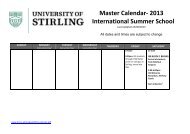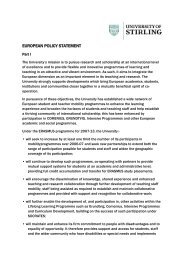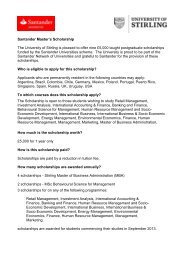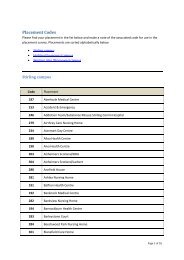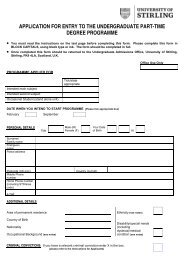Supporting a uK SucceSS Story: The impacT of - Research Councils ...
Supporting a uK SucceSS Story: The impacT of - Research Councils ...
Supporting a uK SucceSS Story: The impacT of - Research Councils ...
Create successful ePaper yourself
Turn your PDF publications into a flip-book with our unique Google optimized e-Paper software.
Electronic POWERbreathe® K-Series<br />
Mechanical POWERbreathe<br />
Engineering new products to aid training is something that has<br />
occupied Pr<strong>of</strong>essor Alison McConnell at Brunel University for<br />
nearly 20 years. In 1994 she launched the first breathing training<br />
product for sports people. <strong>The</strong> POWERbreathe® is a simple<br />
mechanical device that can be likened to a “dumbbell for your<br />
diaphragm”. As little as 10 years ago, breathing training was<br />
not considered to be an essential part <strong>of</strong> athlete preparation.<br />
However, recent advances in our understanding <strong>of</strong> respiratory<br />
limitation to exercise performance have completely changed<br />
this view. <strong>The</strong> research conducted by Pr<strong>of</strong>essor McConnell and<br />
her team at Brunel began by describing the physiological and<br />
performance effects <strong>of</strong> inspiratory muscle training (IMT) to<br />
athletes and patients. <strong>The</strong> team then went on to understand<br />
the underlying mechanisms for these effects and then using<br />
these insights the team developed new training products and<br />
protocols. POWERbreathe® has become an important part<br />
<strong>of</strong> the preparation <strong>of</strong> elite competitors and has been used by<br />
Olympic and World Champions, including England’s 2003 Rugby<br />
World Cup winners (as well as their Australian rivals in the final).<br />
Outside <strong>of</strong> sport POWERbreathe® is also becoming more widely<br />
known and used within the NHS and overseas health providers<br />
to treat patients with breathlessness. Underpinned by Pr<strong>of</strong>essor<br />
McConnell’s research, POWERbreathe® has created a new market<br />
in the sports sector for breathing training.<br />
Bryce Dyer Senior Lecturer in Product Design at Bournemouth<br />
University has helped create the prosthetic limb Irish Paralympic<br />
Cyclist Colin Lynch will use at the London 2012 Games. <strong>The</strong> device<br />
aims to give Lynch a competitive edge, but like any sport, there<br />
are rules and regulations that the design has to adhere to so was<br />
created with those in mind. Lynch won gold when he trialled the<br />
bespoke prosthetic leg at the 2012 Union Cycliste Internationale<br />
(UCI) Para-Cycling Track World Championships in Los Angeles<br />
in February, the first competitive test for the para-cyclist<br />
this year. Bryce said: “<strong>The</strong> limb is shaped differently. It uses a<br />
different method <strong>of</strong> manufacture, and it’s very, very aerodynamic<br />
compared to conventional prosthesis. It’s designed to give him<br />
maximum speed and power transfer and is intended to give him<br />
something that would ultimately help and not hinder him in races.”<br />
“POWERbreathe® has become an important part <strong>of</strong> the<br />
preparation <strong>of</strong> elite competitors and has been used by<br />
Olympic and World Champions, including England’s 2003<br />
Rugby World Cup winners.”<br />
SECTION ONE : TECHNOLOGY 9




